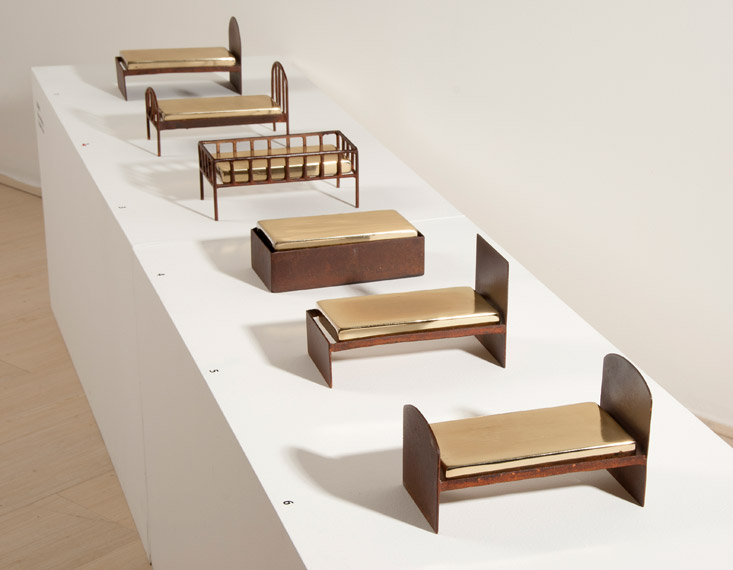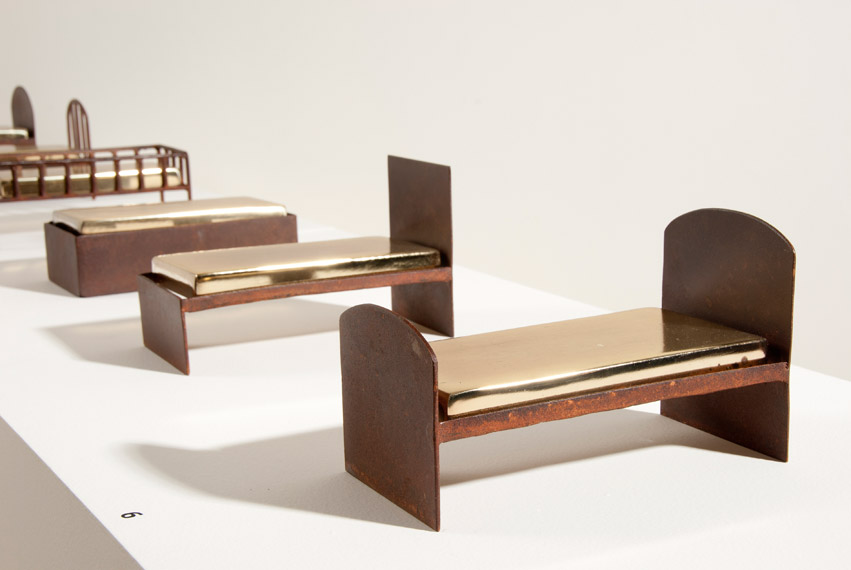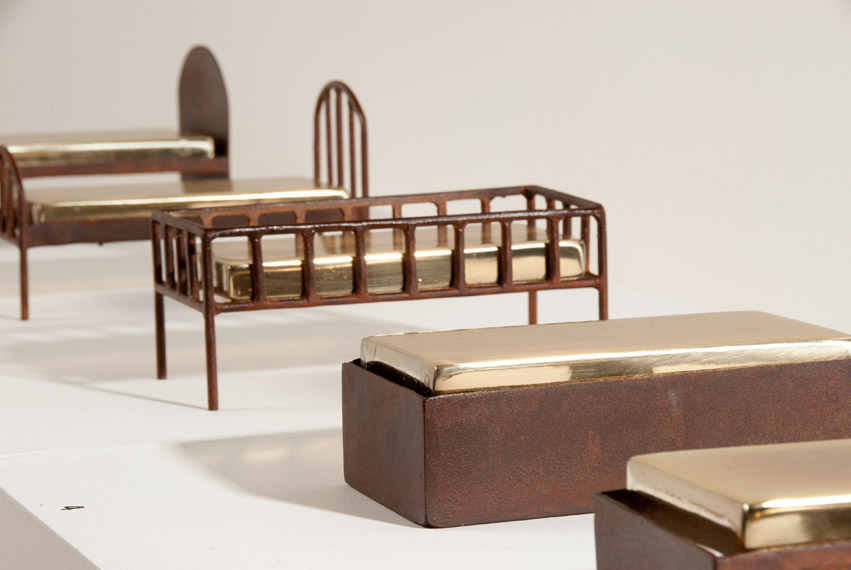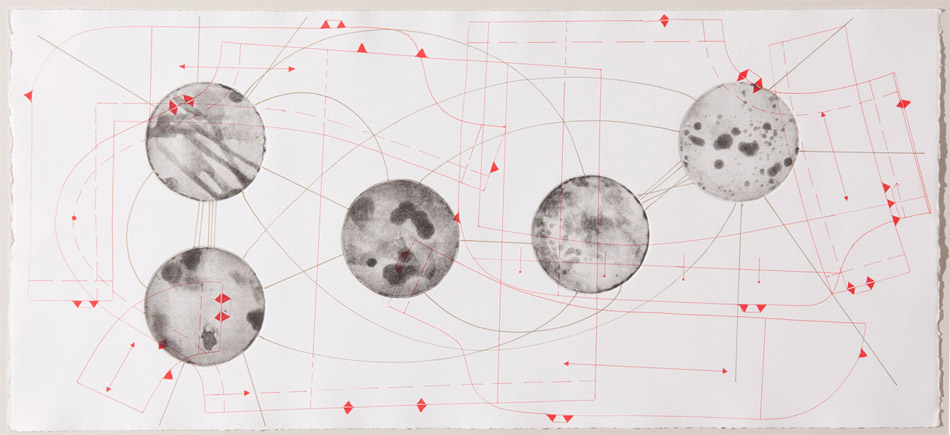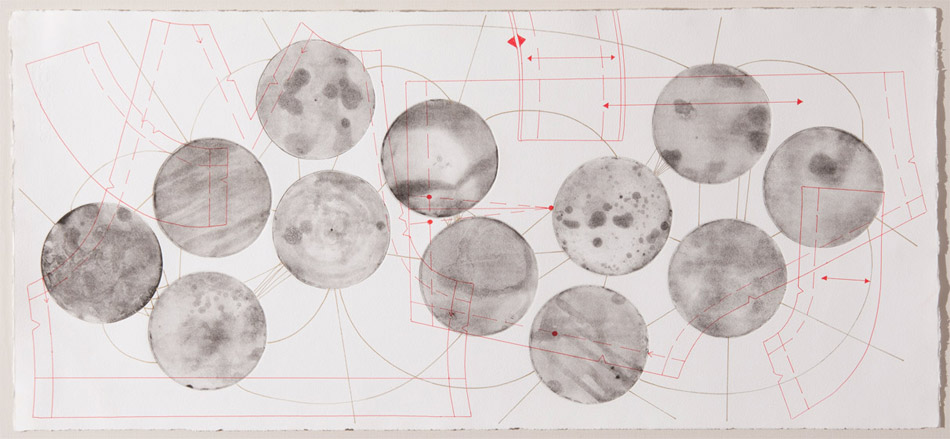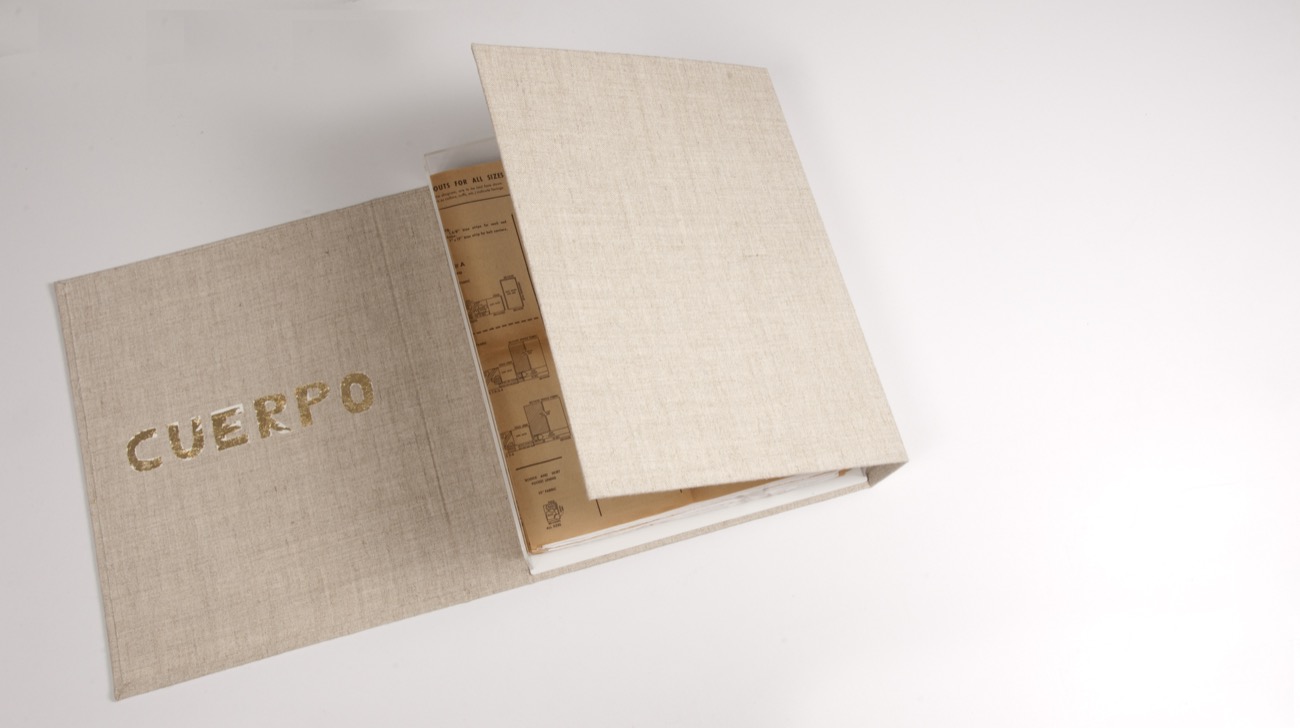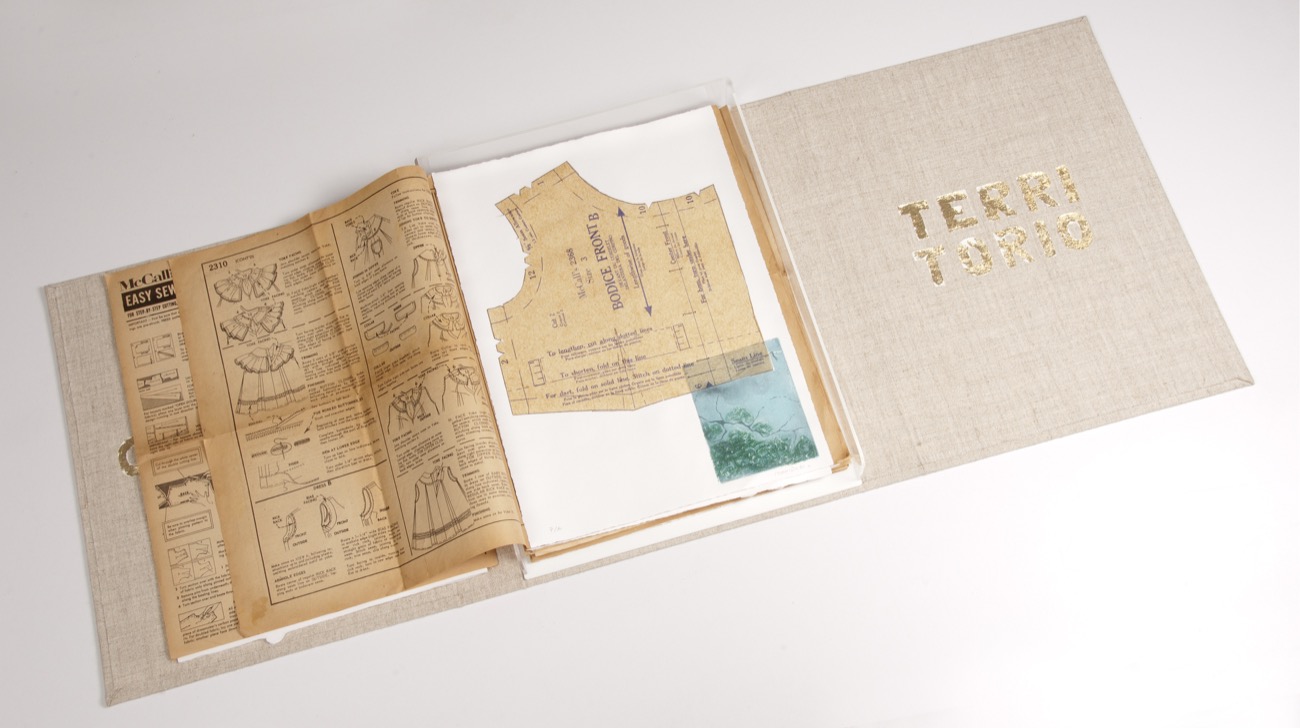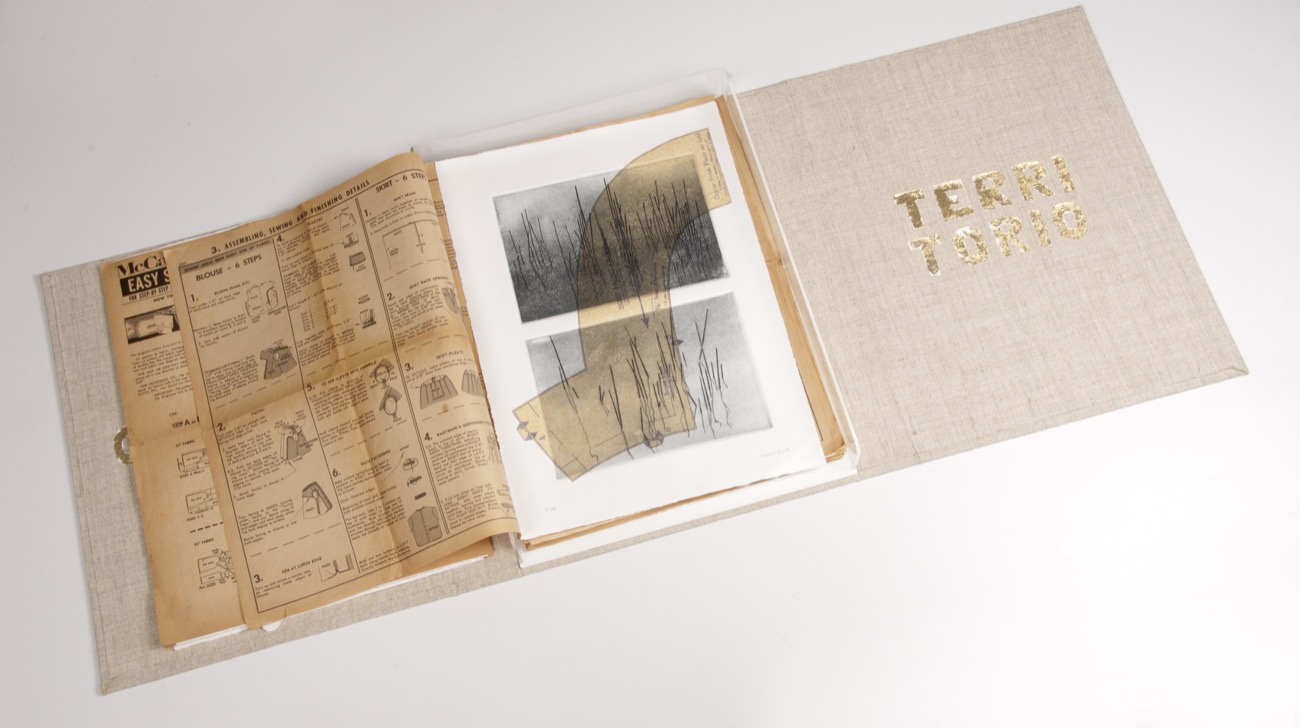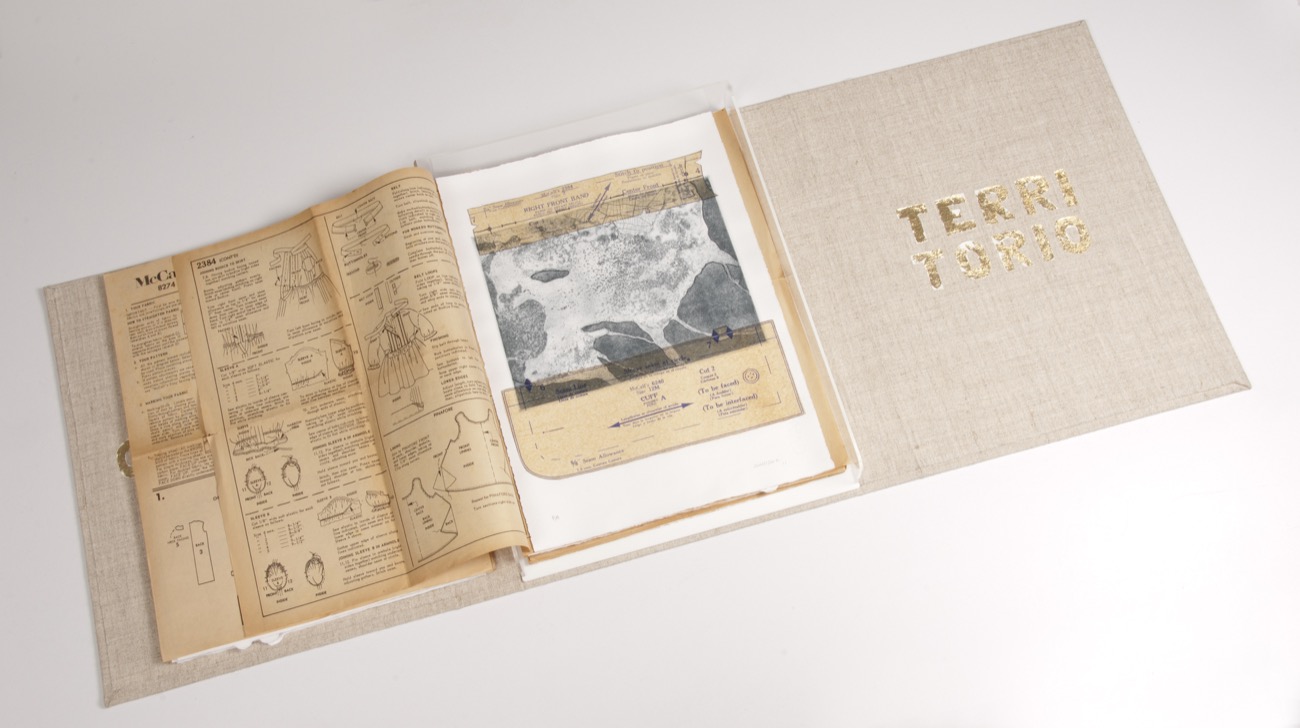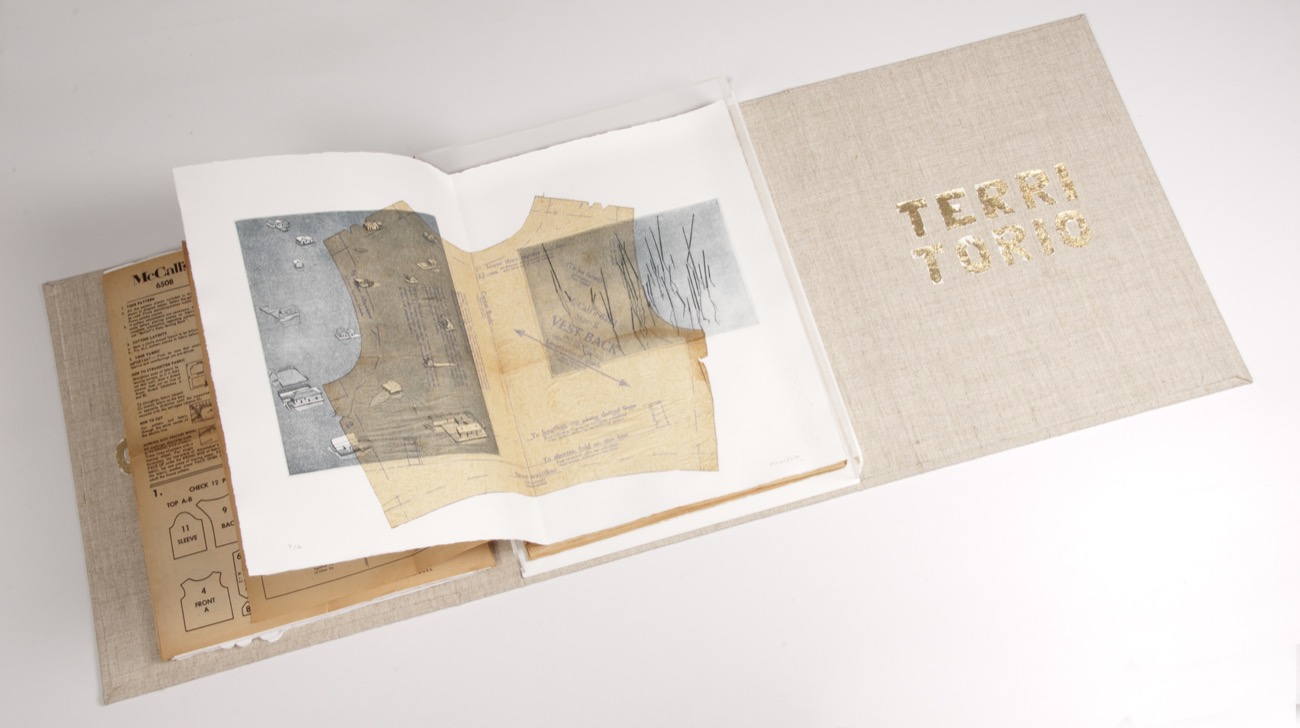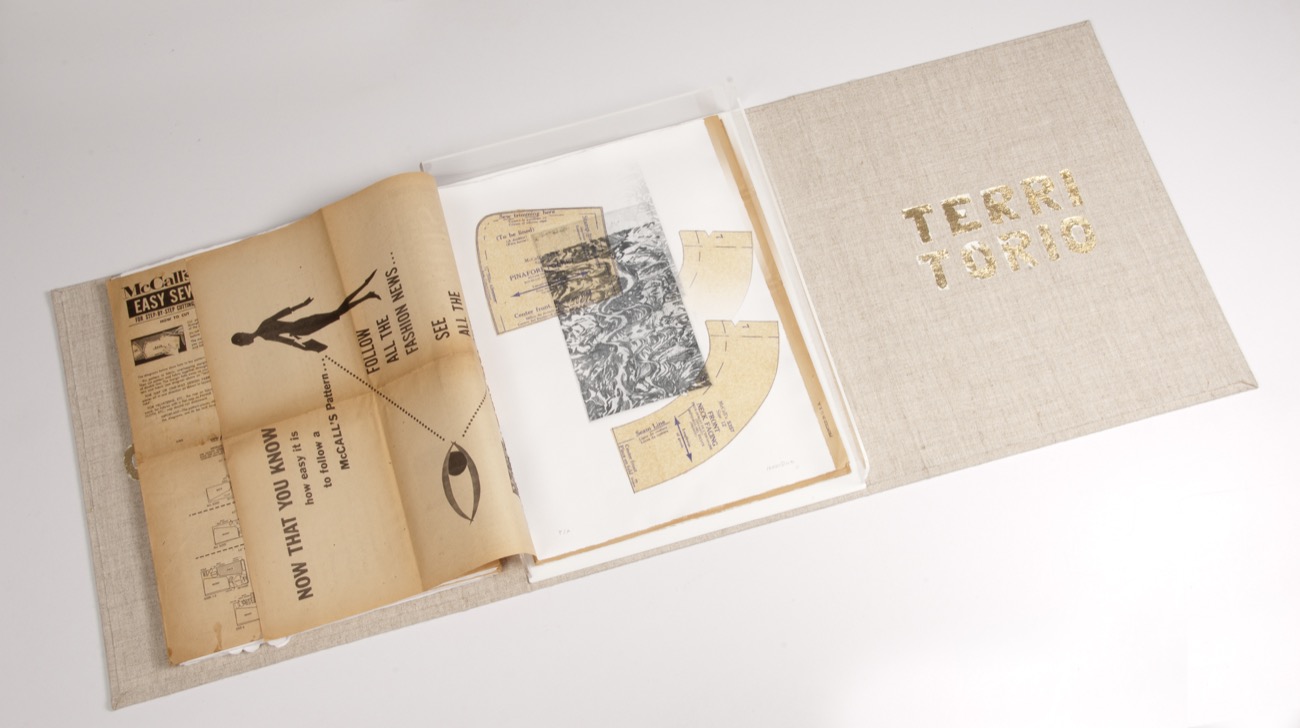Body | Territory 10 . Oil on canvas with gold leaf.
50 x 50 cm . 2011
Adverse Topology
By Santiago Vélez
At present, there are so few opportunities presented to us to observe overlapping realities so closely that, because of their proximity and similarities, we believe them to be diffuse, disparate and often unrelated. Yet, it is precisely the function of art to provide one of the few places to dissociate affinities that are based on reality, but that impact on the space of aesthetic reflection, as in the case of the exhibition Body/Territory by artist And Isabel Díez, which make clear diverse analogies of supposedly dissimilar particularities.
Body/Territory is that: the metaphoric conjugation of confronted spaces that achieve iconic symbiosis in the memory – the event – of a parallel story touched by sinister and catastrophic coincidences. In the entire exposition and each one of the pieces that make it up, Ana Isabel manages to show how the external drive affects and rebuilds a physical spatiality in geographic or corporeal context of the telluric entities or human identities.
And it is that the relationships set out in this sample are given in multiple and varied states of artistic expression: in the distant view of the mountainous landscape or in the visceral auscultation of the chaste womb; in the lively mapping of the riverbed or the curvilinear shape of the standardized silhouette; in the pictorial representation of the lush Chocó rainforest biosphere or in the gold laminate incrustation that is extracted from there. All the analogies question our own social realities, linked in the linguistic confluence of meanings of the word bed, but that – in turn – deepen the cognitive and poetic dimension from where the connections that the artist presents us are based.
Thus, it suggests that the work of Ana Isabel does not speak of a geography of the territory or an anatomy of the body, but, rather, we would have to meander, based on a topology that for both spatialities is physical. As the science of mathematics is based on the qualitative – and not quantitative – properties of the elements, and like flexible, elastic geometry in which a circumference could topologically equal a square, we have the case of a body (human) that, for its homeomorphic characteristics, has the same topological properties of a territory (geographic), or that a riverbed may have regarding the marriage or death bed, as the case may be.
It seems complex – as the relations arising from the work are – but it is precisely in that science constantly mentioned by Serres and inventories by Lacan where we settle concepts such as transformation, adjacency, dissection, proximity, continuity, distance, region, frontier, interior, exterior, boundary, cut, hole, among other terms that we find all of them together here, embodied in artistic and expressive forms of an aesthetic feeling that suppresses the referential chance to settle in the visionary space of the artist creator of the worlds.
Beds
Mix media (Iron / iron whit golden finish )
12 x 20 x 10 cm
About my work
By Ana Isabel Díez
From the word BED and its different meanings (river bed, sea bed, death bed, marriage bed, etc.), I wanted to reflect on what happened in these spaces: the deterioration of our landscape, the pollution of rivers and water sources, domestic violence and abuse against women.
As a symbol of our landscape, arguably, the prototype of a more pronounced green condition, I chose the tropical rainforest, very showy especially in the Colombian Pacific region, particularly in the area of El Chocó. It is a region where so many other natural resources beside water, all kinds of minerals – including gold – abound. It is paradoxically a region of enormous poverty, low levels of education and health, where its inhabitants have benefitted little from this “wealth.” Moreover, it is precisely the exploitation of these resources that is the cause of their ills: deforestation by clear – cutting of forests, deterioration of the rivers through illegal gold mining.
Unfortunately, this situation is also present in some regions of our Department. Thus, the small mining area in Antioquia is one of the most contaminated in the world. The cyanide and mercury used in gold – recovery processes produce arsenic and, consequently, enormous contamination. To make this problem even more noticeable, we only have to mention the disproportionate use of resources and poor performance: 1,000 liters of water are needed to produce one (1) gram of gold.
On the other hand, in analyzing the Profamilia survey, we are concerned about the situation of women and families in this area: the low levels of education, domestic violence that is almost never reported (37% of the women received some kind of physical abuse; however, only 21% received and 73% never sought medical attention). The average age of the first marriage is one of the lowest in the country; instead, it presents the highest rate of infant mortality and the lowest rate of human development.
What is happening in these beds? Where can we go if this situation is not reversed? As a local woman who suffers for her land well says, “There is something connected between the body and the territory.”
For this reason, I want to present in this exhibition a new cartography in which body and territory are not independent; there exists a BODY/TERRITORY space that functions as a unit, in which, we can build a new Atlas of the Secret Geography. An ideal space where woman and river can live without mistreatment.
Artist Book
Mix media, linen cover, acrylic case old sewing patterns and engravings.
41x31x6cms. 2011




